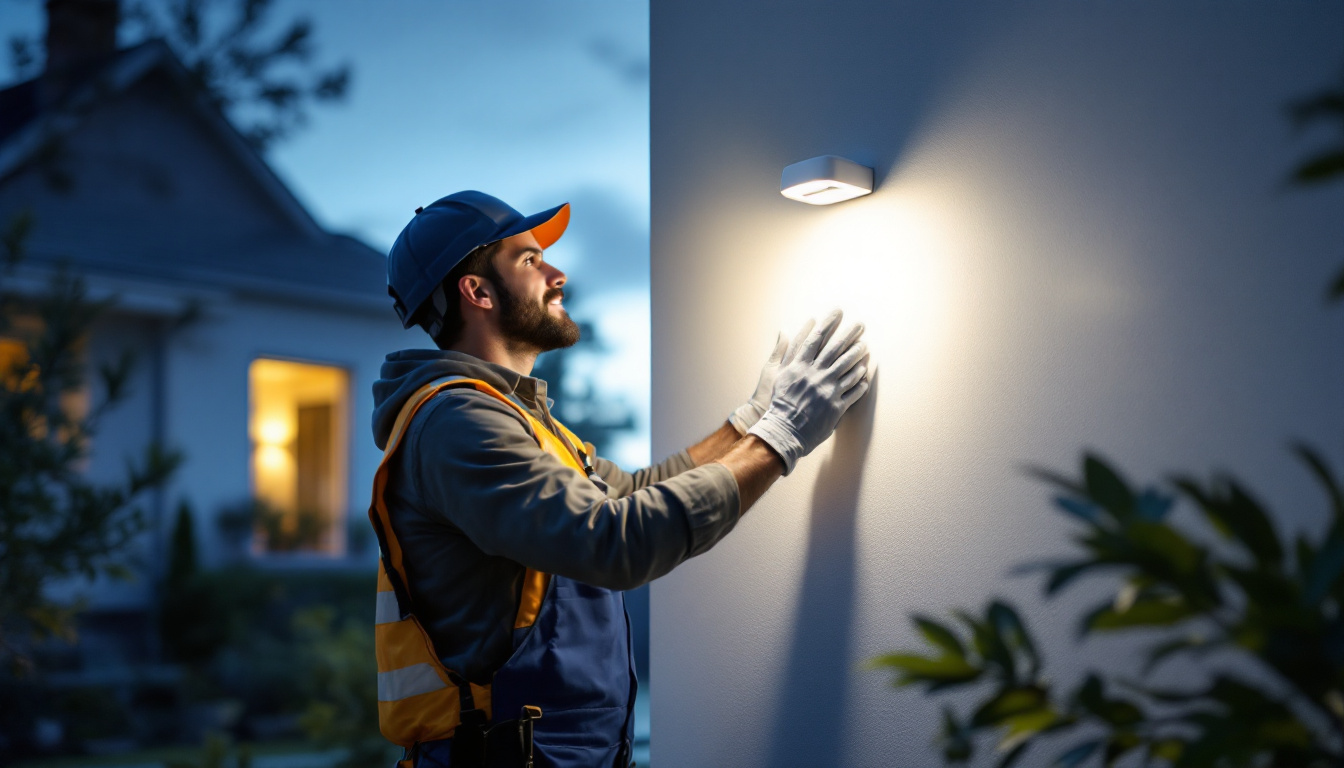
In the realm of modern lighting solutions, movement detector lights have emerged as an essential component for both residential and commercial applications. These innovative devices not only enhance security but also contribute to energy efficiency and convenience. For lighting contractors, understanding the intricacies of movement detector lights is paramount to providing clients with optimal solutions tailored to their specific needs.
Movement detector lights, often referred to as motion sensor lights, utilize advanced technology to detect movement within a designated area. They typically employ infrared sensors, ultrasonic sensors, or a combination of both to identify motion and activate the lighting system accordingly. This technology is particularly beneficial in areas that require enhanced security or where manual operation of lights may be impractical. Additionally, these lights can be programmed to operate at specific times or under certain conditions, adding an extra layer of customization to their functionality.
There are several types of movement detectors available on the market, each with its unique features and applications. The most common types include:
Movement detector lights find applications in various settings, including:
Moreover, the integration of smart technology into movement detector lights has opened up new possibilities. Many modern systems can now connect to home automation networks, allowing users to control lighting remotely via smartphone apps. This feature not only enhances convenience but also enables users to monitor their property in real-time, receiving alerts when motion is detected. Such advancements make movement detector lights not just a security measure, but an integral part of a smart home ecosystem, where safety and efficiency go hand in hand.
When advising clients on the installation of movement detector lights, several key considerations should be taken into account. These factors can greatly influence the effectiveness and efficiency of the lighting system.
The placement of movement sensors is crucial for optimal performance. Sensors should be positioned to cover the intended area without obstruction. For outdoor installations, it’s essential to consider the angle of detection and the height at which the sensor is mounted. In indoor settings, placing sensors in corners can maximize coverage while minimizing blind spots. Additionally, it is important to evaluate the surrounding environment for potential interference, such as trees or structures that could obstruct the sensor’s line of sight. Proper placement not only enhances the sensor’s ability to detect movement but also ensures that the lighting system operates efficiently, reducing unnecessary energy consumption.
Many modern movement detector lights come equipped with adjustable settings that allow for customization based on specific needs. These settings may include:
Moreover, understanding the different types of sensors available can also aid in making informed decisions. For instance, passive infrared (PIR) sensors are excellent for detecting heat emitted by moving objects, making them ideal for indoor use. Conversely, microwave sensors can cover larger areas and penetrate obstacles, making them suitable for outdoor applications. By selecting the right type of sensor and adjusting its settings, contractors can provide tailored solutions that meet their clients’ specific lighting needs while enhancing safety and security.
Proper installation of movement detector lights is essential for ensuring their effectiveness and longevity. Lighting contractors should adhere to best practices to deliver high-quality results.
When installing movement detector lights, it is vital to ensure that the wiring and power supply are adequate for the specific model being used. Contractors should familiarize themselves with the manufacturer’s specifications regarding voltage and amperage requirements. Additionally, using weatherproof enclosures for outdoor installations can prevent moisture-related issues.
After installation, thorough testing and calibration of the movement detector lights are necessary. This process involves:
To ensure the longevity and reliability of movement detector lights, regular maintenance and troubleshooting are essential. Lighting contractors should educate clients on best practices for upkeep.
Dust, dirt, and debris can accumulate on sensors, affecting their performance. Regular cleaning of the sensor lenses and surrounding areas will help maintain optimal functionality. Contractors should recommend a cleaning schedule based on the environment, particularly for outdoor installations where exposure to the elements is greater.
Even with proper installation and maintenance, issues may arise. Common problems include:
The lighting industry is continually evolving, and movement detector lights are no exception. Emerging trends are shaping the future of these devices, offering exciting opportunities for lighting contractors.
As smart home technology gains popularity, the integration of movement detector lights with smart systems is becoming increasingly common. These systems allow users to control their lights remotely, receive notifications, and customize settings through smartphone applications. For contractors, understanding these technologies can provide a competitive edge in the market.
With a growing emphasis on sustainability, manufacturers are developing movement detector lights that utilize energy-efficient LED technology. These innovations not only reduce energy consumption but also extend the lifespan of the lighting fixtures, offering clients long-term savings.
Future movement detector lights may incorporate advanced security features, such as built-in cameras or alarm systems that activate upon detecting motion. These enhancements can provide clients with added peace of mind and increase the overall value of the installation.
Movement detector lights represent a significant advancement in lighting technology, offering numerous benefits for both residential and commercial applications. For lighting contractors, understanding the various types, applications, and installation best practices is essential for delivering high-quality solutions to clients. By staying informed about emerging trends and innovations, contractors can position themselves as knowledgeable professionals in the ever-evolving lighting industry.
Incorporating movement detector lights into projects not only enhances security and convenience but also aligns with the growing demand for energy-efficient solutions. As the landscape of lighting technology continues to change, staying ahead of the curve will ensure that lighting contractors can meet the diverse needs of their clients effectively.
Ready to elevate your lighting projects with the latest movement detector lights? At LumenWholesale, we provide lighting contractors like you with the highest quality, spec-grade lighting products at prices that can’t be beaten. Say goodbye to local distributor markups and hello to our extensive selection that meets rigorous industry standards. With LumenWholesale, you gain access to reliable, high-performance lighting solutions that will impress your clients and enhance any space. Plus, enjoy the convenience of hassle-free bulk buying with free shipping, ensuring you get the best value without any hidden costs. Don’t compromise on quality or price. Visit LumenWholesale today and discover the perfect blend of quality, affordability, and convenience for all your lighting needs.

Discover the truth about fluorescent bulbs and their heat emissions, and learn how lighting contractors can leverage this knowledge to enhance their projects.

Explore the advantages and drawbacks of using 4ft light bulbs in your projects.

Discover the key factors that distinguish top lighting contractors when it comes to installing the brightest garage lighting.

Discover the essential guide for lighting contractors with our comprehensive checklist for wire pulling machines.